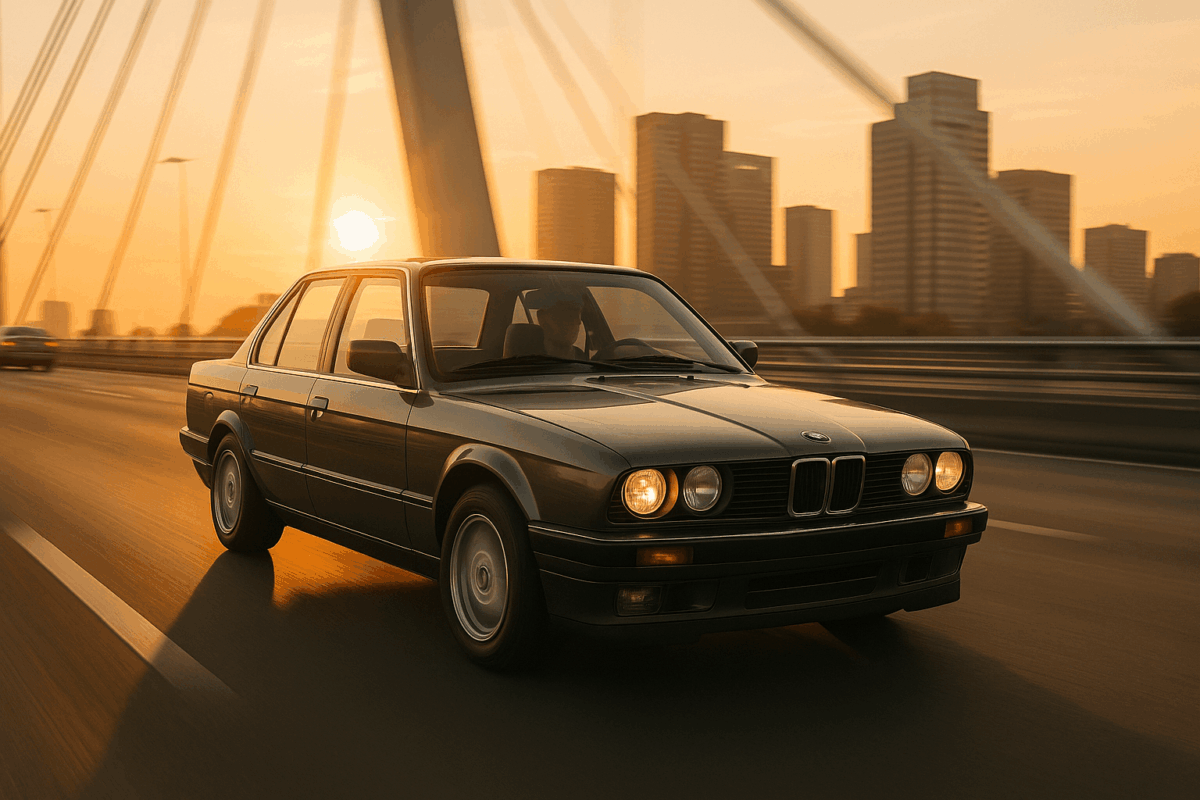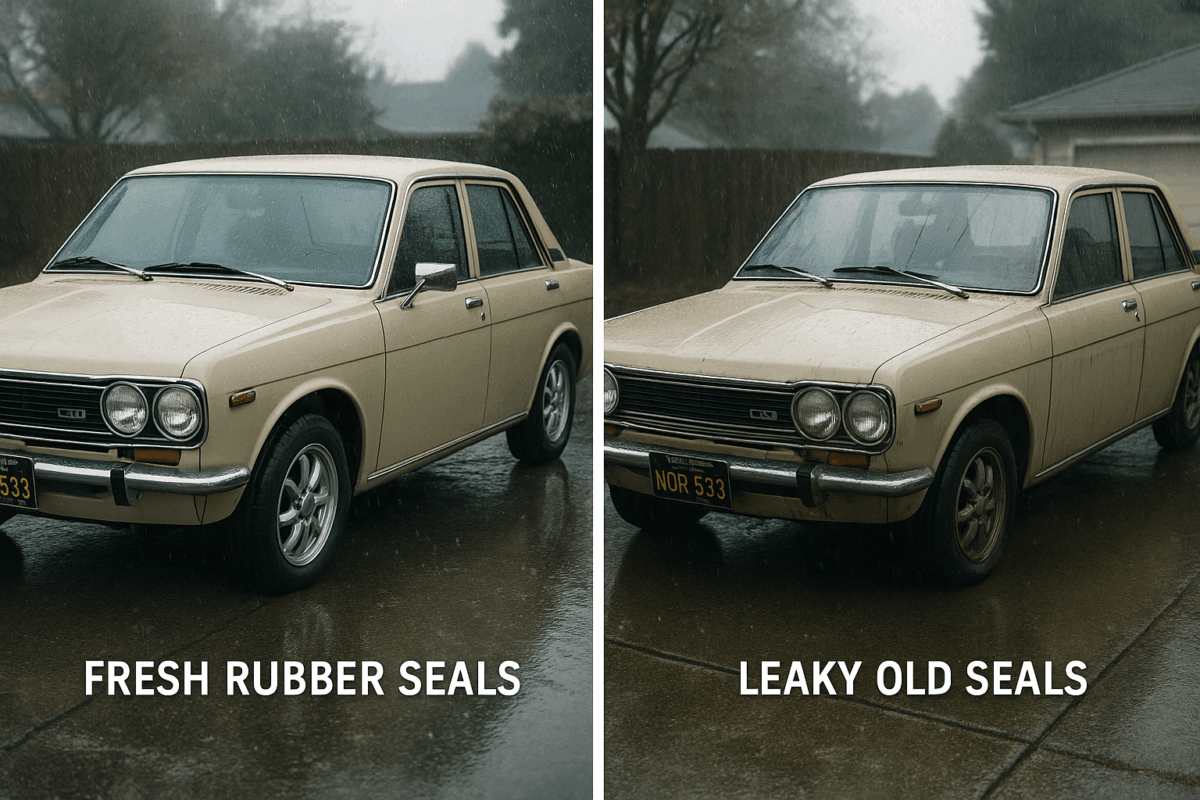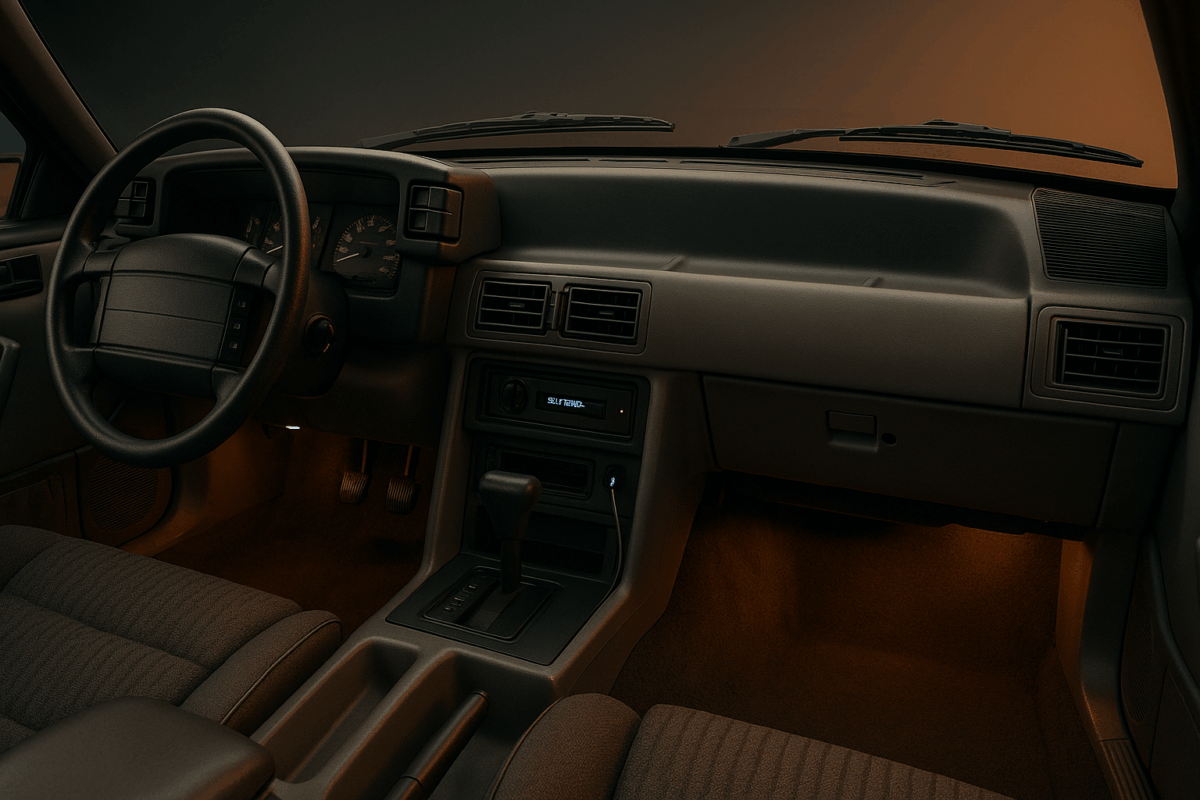There’s genuine fun in driving a classic car. Modern vehicles can’t match this experience, whether you’re cruising through city traffic or taking scenic routes. Environmental consciousness plays a role, too. Keeping vintage cars on the road reduces manufacturing waste. The data reveals a striking 28% increase in vintage-car mileage logs over the past five years, proving this isn’t just a passing trend. This growing movement shows enthusiasts refuse to let classics gather dust in the garage.
Why Daily Driving a Classic Car Is (and Isn’t) Practical
Advantages:
- Timeless Style – No modern car can match the character and presence of a true classic on your daily driving
- Lower Depreciation – Most classic cars actually appreciate while serving as your daily driver, unlike new cars
- Simpler Technology – Fewer electronic systems mean easier troubleshooting when issues arise
- Community Connection – Classic car ownership opens doors to enthusiast networks and events
- Driving Experience – Driving engagement is achieved by manual transmissions and direct steering
Drawbacks:
- Safety Gaps – Many classic cars lack safety elements: airbags, antilock brakes, and stability control systems
- Weather Sensitivity – Older cars struggle with weather changes
- Higher Upkeep – Expect more frequent service intervals and harder-to-find parts
- Fuel Economy – Vintage engines typically consume more gasoline than modern alternatives
- Reliability Concerns – Breaking down in traffic becomes a real possibility that requires planning
⚠️ EpicVIN statistics show classic car owners spend an average of $2,800 annually on service, nearly double what most people pay for modern vehicle upkeep. Don’t worry, though. The joy factor often justifies the extra expense for the most part. When you’ve owned a classic for daily basis use and use it as your only car, you quickly learn that budgeting for repairs becomes essential.
Legal & Insurance Basics You Can’t Skip
Getting your classic vehicle road-ready for daily driving requires navigating specific legal and insurance requirements:
- Research Insurance Options – Contact specialty insurers who understand collector car needs
- Secure Agreed-Value Coverage – Standard policies often undervalue classic cars significantly
- Document Your Backup Vehicle – Most insurers require proof you own a modern automobile, too
- Check Mileage Restrictions – Many classic policies limit annual miles, which won’t work for daily driving
- Verify Emissions Requirements – Some states exempt older cars, while others require modern standards compliance
- Update Registration Type – Ensure your classic is registered for daily use, not just show/parade
- Install Required Safety Equipment – Some states require specific lighting or brakes
- Photograph All Upgrades – Document any modifications that strengthen reliability
Choosing the Right Classic for Daily Duty

| Factor | Pre-1975 Cars | Post-1975 Cars |
| Parts Availability | Limited, expensive sourcing | Better reproduction market |
| Fuel System | Carburetor complexity | Electronic ignition reliability |
| Safety Features | Basic disc brakes, no airbags | Improved crash protection |
| Emissions | Often exempt from testing | Must meet federal standards |
| Technology | Simple mechanical systems | Early electronic integration |
| Climate Control | Manual heater/AC systems | More effective HVAC options |
Post-1975 cars are characterized by a balance of classic character and daily driver practicality. These cars benefit from improved manufacturing quality. They maintain the vintage driving experience.
Top 10 Expert Picks for Everyday Use
- BMW E30 (1982-1994) – Excellent handling and build quality. EpicVIN reliability scores consistently rank in the top tier. Watch for rust around wheel wells and check the timing belt service history. These vehicles are exceptional examples of daily basis cars for those who value classic character.
- Volvo 240 (1974-1993) – Built like a truck with legendary durability. It makes sense for daily commuting. These cars routinely exceed 300,000 miles (certainly, with proper care). The boxy styling and creature comforts make daily commuting comfortable year-round. However, you’ll want to leave early during rush hour: acceleration is not this truck-like model’s forte.
- Datsun 510 (1968-1973) – Lightweight with excellent parts support. The RWD layout ensures engaging driving dynamics and makes every commute feel special. Rust can be an issue. Therefore, inspect thoroughly before purchase and budget for bodywork.
- Volkswagen Beetle (1938-2003) – Simple air-cooled engine design. Easy upkeep is the vehicle’s specific feature. Parts are plentiful and affordable. The unique driving experience never gets old. Nonetheless, harsh weather can challenge these air-cooled classics.
- Fox-Body Mustang (1979-1993) – American muscle with reasonable reliability. V8 vehicles offer excitement while four-cylinder versions deliver better economy. Interior ergonomics shows its age. However, performance remains strong after all these years.
- Mazda Miata NA (1989-1997) – Modern classic with excellent reliability scores. Daily driving is a pleasure. The convertible top adds fun factor to mundane commutes. It turns every trip into an event. Limited cargo space is the main drawback.
- Toyota AE86 (1983-1987) – Lightweight and balanced with Toyota’s reputation for dependability. It’s characterized by strong parts support nationwide. Values have risen significantly in the past few years. Good examples are harder to find at reasonable sale prices.
- Mercedes-Benz W123 (1976-1985) – German engineering at its finest. These cars run forever with proper care. Thus, they justify their higher purchase prices. Diesel vehicles offer exceptional economy for their age and era.
- Saab 900 (1978-1998) – Quirky Swedish design with solid build quality. Turbocharged vehicles provide surprising performance that modern drivers appreciate. Parts availability has improved with aftermarket support. However, some components remain expensive.
- Budget Wildcard: Ford Escort (1981-1990) – Affordable entry point. It demonstrates decent reliability for budget-conscious enthusiasts. Week after week, the car does its job reliably. Parts remain cheap, and most mechanics stay familiar with these straightforward designs.
Red Flags – Models to Think Twice About
⚠️ High-Risk Categories:
| Issue Type | Examples | Risk Level |
| Parts Scarcity | British Leyland cars, Bricklin SV-1 | High downtime risk |
| Rust Susceptibility | Italian cars pre-1985, early Japanese cars | Structural concerns |
| Orphan Marques | Studebaker, AMC specialty models | Limited support network |
| Complex Systems | Early luxury cars with air suspension | Expensive failures |
🚨 Avoid These Notorious Trouble Spots:
- Anything with NLA (No Longer Available) critical components
- Cars with proprietary electronic systems from defunct manufacturers
- Cars are known for catastrophic engine failures
- Vehicles requiring specialized maintenance
Modern Upgrades to Boost Reliability (Ignition to Cooling)
| Upgrade Category | Cost Range | Reliability Benefit |
| Electronic Ignition | $150-$400 | Eliminates points/condenser failures |
| High-Output Alternator | $200-$500 | Powers modern accessories reliably |
| Aluminum Radiator | $300-$800 | Better cooling, longer life |
| Radial Tire Conversion | $400-$1,200 | Improved handling and reliability |
| Electric Fuel Pump | $100-$300 | More consistent gasoline delivery |
| Upgraded Water Pump | $150-$400 | Prevents overheating issues |
These upgrades reduce breakdown odds and preserve the classic’s original character. Focus on reliability-enhancing modifications. They won’t hurt resale value or compromise the unique driving experience. The main idea is to maintain authenticity. Pay attention to all those things that highlight the car’s classic background.
Safety First – Bringing Vintage Up to Current Standards
Essential Safety Checklist:
☑ Install front disc brakes if not equipped originally
☑ Upgrade to three-point seatbelts throughout the cabin
☑ Add halogen headlights for better nighttime visibility
☑ Check the steering column for modern safety improvements
☑ Install modern turn signals and hazard warning lights
☑ Add backup lights if missing from the factory
☑ Consider roll bar installation for convertible cars
☑ Ensure all exterior lights meet current brightness requirements
☑ Verify traction control isn’t needed for your driving conditions
Weatherproofing Classics for Year-Round Commutes
💡 Rust Prevention Tips: Apply modern undercoating to vulnerable areas. Check drain holes in doors and fenders regularly. Wash salted road residue off immediately during the winter months.
💡 Climate Control Upgrades: Modern heater cores dramatically improve cabin warming. Retrofitting air conditioning makes summer driving bearable.
💡 Cold Weather Prep: Carbureted engines need special attention in freezing temperatures, especially if your classic becomes your current daily driver. Keep a starting fluid handy. Learn proper cold-start procedures for reliable operation. Consider engine block heaters for extreme climates. Some owners find they need a valve job after extended cold-weather operation.💡
💡Electrical Protection: Older wiring systems struggle with moisture. Apply dielectric grease to connections and replace brittle wire insulation.

Budget & Cost Calculator
| Expense Category | Monthly Cost | Annual Total |
| Fuel (15,000 miles) | $180-$280 | $2,160-$3,360 |
| Insurance | $120-$200 | $1,440-$2,400 |
| Maintenance | $200-$350 | $2,400-$4,200 |
| Registration/Taxes | $15-$50 | $180-$600 |
| Parts Stockpile | $75-$150 | $900-$1,800 |
| Total Operating Cost | $590-$1,030 | $7,080-$12,360 |
Five-Year Ownership Scenarios:
- Budget Classic ($8,000 purchase): Total ownership expense $43,400-$69,800
- Mid-Range Classic ($18,000 purchase): Total ownership expense $53,400-$79,800
- Premium Classic ($35,000 purchase): Total ownership expense $70,400-$96,800
Don’t forget about potential appreciation. Many owners find the total expense reasonable when spread across years of enjoyable driving. Nevertheless, emergency repairs can add unexpected costs.
Comfort & Tech Tweaks That Preserve Period Charm
Comfort Upgrades:
- Retro Bluetooth Radios – Modern connectivity in vintage style
- Hidden USB Charging – Discrete phone charging without visible modern tech
- Sound Deadening – Reduces road noise without changing appearance
- Seat Refoaming – Improves support using the original upholstery
- Cruise Control Kits – Available for many classic cars, reduces fatigue
- Cup Holders – Aftermarket solutions (don’t compromise dashboard integrity)

90-Day Checklist – from Purchase to Confident Commuter

Days 1-30: Initial Assessment:
☑ Complete professional inspection
☑ Change all fluids (oil, coolant, brake, transmission)
☑ Install new tires if needed
☑ Test all electrical systems
☑ Document current condition with photos
Days 31-60: Systems Refresh:
☑ Perform baseline tune-up
☑ Replace worn belts and hoses
☑ Service brakes and suspension
☑ Address any immediate safety concerns
☑ Source critical spare parts
Days 61-90: Road Testing:
☑ Build emergency roadside kit
☑ Complete several short test drives
☑ Plan first long-distance shakedown trip
☑ Establish a relationship with a classic-friendly mechanic
☑ Conclusion – Key Takeaways & Next Steps
Summary Points:
- Classic cars can serve as daily drivers with proper preparation and realistic expectations about ownership
- Post-1975 vehicles generally offer the best balance of character and dependability for regular use
- Compared to modern automobiles, budget 50-100% more for upkeep. However, don’t let this break your enthusiasm
- Safety upgrades are essential. Nevertheless, they can be done tastefully without compromising authenticity
- Parts availability research is crucial. Research the market before committing to any classic for regular use
⚠️Remember that driving a classic daily means accepting occasional inconvenience. It inevitably comes with vintage ownership. You’ll need flexibility when service issues arise. Be patient when parts take time to come.
Planning becomes essential. You’ll often need to leave early for important appointments. The worst thing is that you always need to have contingency transportation available, just in case.Join local enthusiast groups for support
FAQ
How to insure a classic car as a daily driver?
Most insurers require agreed-value coverage. Also, you need to prove that you own a modern backup car. Mileage caps vary; therefore, shop for specialty policies that allow commuting.
Is it a good idea to daily drive a classic car?
Yes. If you’re ready for higher maintenance, safety upgrades, and flexible travel plans when parts delays strike.
Can you drive an antique car every day?
Legally, yes. However, emissions exemptions, registration type, and local safety rules can limit use in some states.
Can I insure a classic car as a daily driver?
Only a few carriers permit this; expect higher premiums and documentation of upgrades that improve safety and reliability.
How do I turn a classic car into a daily driver?
Start with a mechanically sound model. Then, refresh the brakes and suspension. Add reliable ignition and cooling.
What classic car is most reliable for long commutes?
EpicVIN data shows Volvo 240s and BMW E30s averaging the fewest roadside failures per 10k miles.
Do classic cars hold their value if driven daily?
Frequent use adds wear that can trim resale 10–20 %, but good documentation and tasteful upgrades soften the hit.
How often should I service a classic used as a commuter?
Expect monthly fluid checks. A full tune-up should be performed every 6,000 miles. It’s twice as often as most modern cars require repairs.
